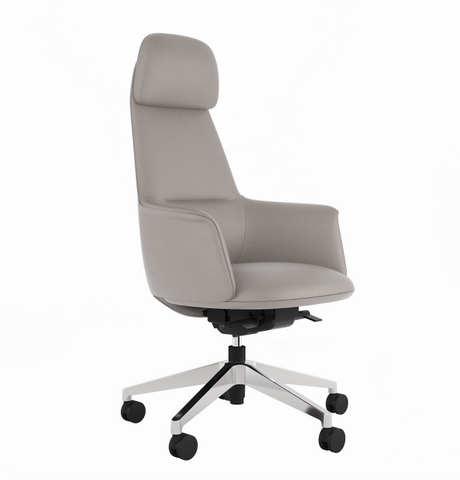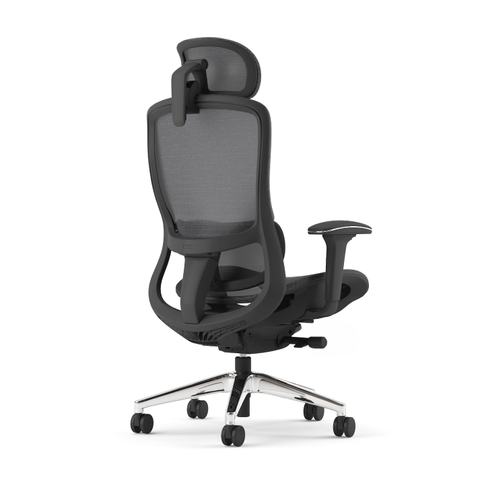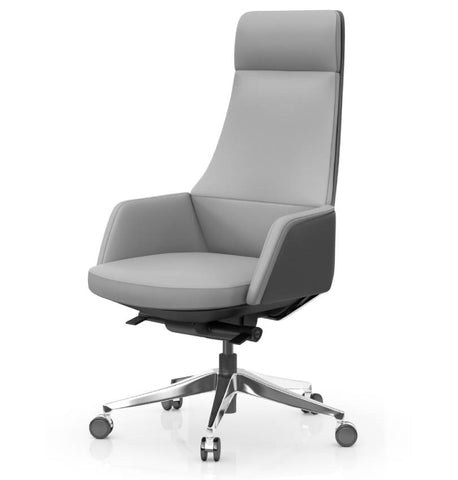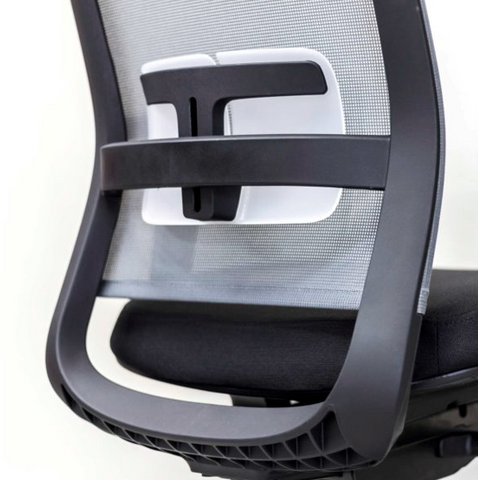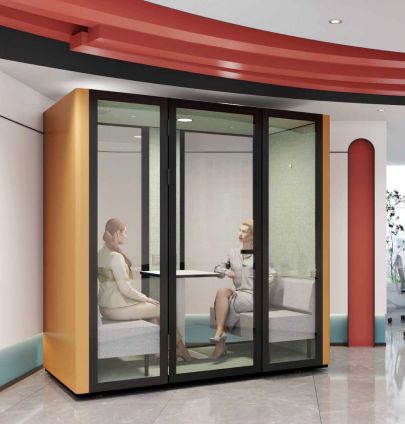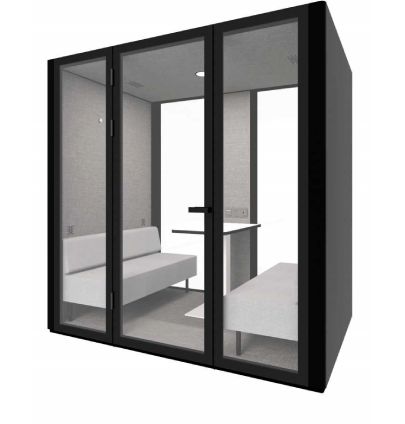What is the Standard Office Desk Height? Does It Really Matter?
by Gilbert Grino on Apr 02, 2025


The Hidden Factor Behind Your Daily Work Comfort
Wrapping up a day at work feeling sore, stiff, or just plain exhausted is the worst way to end a day not just because it is physically exhausting but also because it takes a toll on the emotional wellbeing in the long run. While the blame can be shared between long working hours and well as work pressure, office furniture could also be a culprit. The way your workspace is set up, especially the height of your desk, can make a huge difference in your comfort, posture, and overall productivity. Let’s take a closer look at standard office desk height, if or why it matters, and how you can customize your workspace for the best experience.
The Standard Office Desk Height Explained
The standard height of an office desk usually ranges from 71 to 76 cm (28 to 30 inches). It is usually built by considering the average human propositions. The primary goal is to make sure that the person is able to sit with their feet flat on the ground with their knees at an angle of 90 degrees along with the elbow resting naturally on the surface of the desk while typing.
When designing a standard desk, the average human height that is taken into consideration is around 5’8” to 5’10". But what about people who don't fall into this particular height category, how can they achieve workspace comfort?
Why Desk Height Matters for Ergonomics?
The height of your desk influences how comfortable and productive you feel at work. If your desk is too high, you might find yourself straining your wrists, tensing your shoulders, or feeling stiffness in your neck and back. On the other hand, if it’s too low, you could end up slouching, which puts pressure on your spine and can lead to long-term discomfort. Over time, both scenarios can cause fatigue and even chronic pain, making it harder to stay focused and comfortable throughout the day.
How to Adjust and Customize Your Desk Height for Optimal Comfort?
Not everyone fits into the standard desk height range, necessitating the customization of workspaces for individual needs. Here are some practical solutions:
-
Use a height-adjustable desk:
Users can work in sitting or standing positions with a height-adjustable desk, which promotes better posture and reduces health risks associated with prolonged sitting.
-
Add desk risers:
If your desk is too low, make use of risers to elevate it to the most comfortable level.
-
Use a keyboard tray:
A keyboard tray can help keep proper wrist alignment, particularly for taller individuals.
-
For standing desks:
Ensure your monitor is at eye level and your arms rest at a 90-degree angle when typing to avoid strain.
Adjustable Desks: A Solution for Customizable Comfort
Adjustable desks are becoming a popular choice to improve workplace comfort and ergonomics. Unlike traditional desks with fixed heights, these diverse workstations allow users to customize the height to suit their specific needs, making them an ideal choice for modern offices and home setups alike. When working, some people like to sit, others prefer standing, and many switch between the two. A height-adjustable desk gives you that flexibility while keeping you comfortable.
One of the biggest advantages of an adjustable desk is its ability to improve posture. Sitting for extended periods at an improperly positioned desk can lead to musculoskeletal issues, including back pain, neck strain, and poor spinal alignment. These desks allow you to adjust the height to your natural posture which reduces discomfort and minimizes the risk of long-term health concerns.
Beyond posture, the flexibility of an adjustable desk makes it an excellent addition to any workspace. The ability to switch between sitting and standing throughout the day helps break up long hours of sedentary work, keeping the body more engaged and reducing stiffness. Many professionals find that standing at intervals enhances focus, increases energy levels, and even boosts productivity.
From a health perspective, sitting for long hours can lead to issues like poor circulation, weight gain, and a higher risk of some chronic conditions. Standing periodically throughout the day can help improve blood flow, reduce strain on the lower back, and promote overall movement contributing to a healthier and more active work routine.
If you’re looking for a practical and effective way to upgrade your workspace, a height-adjustable desk is a worthwhile investment. Designed for comfort and efficiency, these desks offer a balance of ergonomics and adaptability, making work more enjoyable and sustainable in the long run. Explore our range of adjustable desks to find the perfect fit for your workspace and take a step towards a healthier, more dynamic work environment.
Common Desk Height Mistakes to Avoid
A pleasant workspace isn’t just about looks, it’s also about supporting your health and keeping you comfortable. Many people unknowingly make small mistakes that can lead to discomfort and even long-term health issues. One of the most common errors is using a desk that’s either too high or too low. An improperly positioned desk can cause strain on your shoulders, neck, and back, making it difficult to maintain good posture throughout the day.
Equally important is the relationship between your desk height and chair height. These two elements should work together to provide a natural and relaxed seating position. If your desk is too high and your chair isn’t adjusted accordingly, you may find yourself raising your shoulders or hunching over, leading to unnecessary strain. On the other hand, if your desk is too low, you might slouch forward, which can cause lower back pain over time.
Another often overlooked factor is the placement of your monitor and keyboard. Your monitor should be at eye level so that you’re not constantly tilting your head up or down, which can cause neck strain. Similarly, your keyboard should be positioned so that your wrists remain straight and relaxed, preventing strain or discomfort during long hours of work. By making these small but impactful adjustments, you can create a workspace that supports both productivity and health.
The Right Desk Setup: Easing Workspace Fatigue

Though in hindsight the height of your office desk may seem like a small detail, it plays an important role in your comfort, posture, and overall productivity. A desk that is too high or too low can lead to strain on your back, shoulders, and wrists, making even simple tasks feel exhausting over time. That is why understanding how to properly adjust and customize your workspace is essential not just for efficiency but for your long-term well-being.
Pause for a moment and check your desk setup. Are you sitting comfortably with your feet flat on the floor and your elbows at a 90-degree angle while typing? Do you find yourself hunching over or stretching uncomfortably to reach your keyboard? Small adjustments, such as raising or lowering your desk height or pairing it with an ergonomic chair, can make a world of difference in reducing strain and improving focus throughout the day.
If you are looking to create a healthier and more adaptable workspace, consider switching to a height-adjustable desk. With these desks, you can easily adjust the workspace to suit your preferences, whether you want to sit, stand, or alternate between both. By making this simple yet impactful change, you can enhance your comfort, boost your energy levels, and create a workspace that truly supports your productivity.















